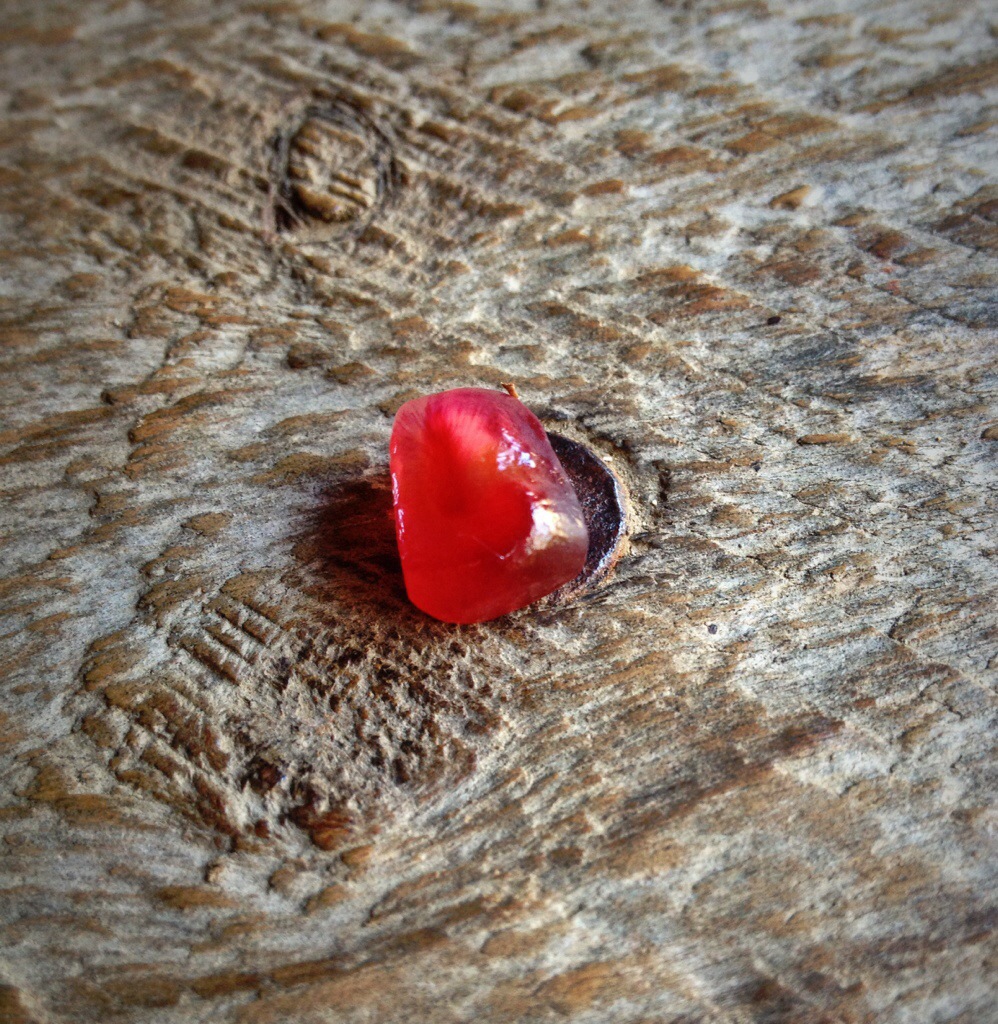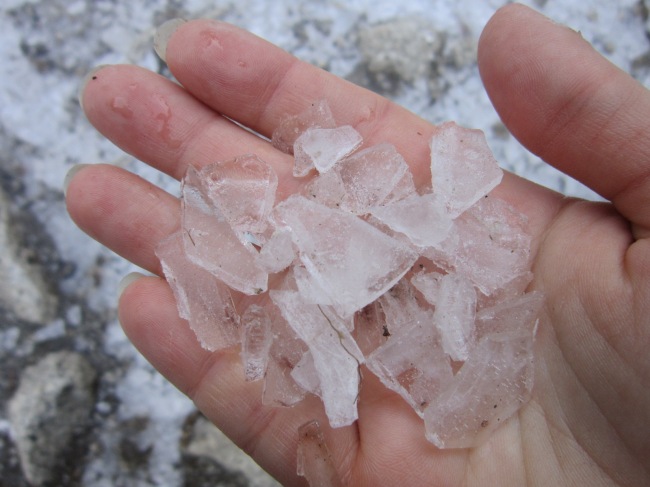 Pomegranates are made to be enjoyed in the cool of the day, while walking down a dirt path through a green forest, so that every moment you step into a beam of sunlight seeping through tree boughs, the cracked open flesh in your palm becomes more white, more honeycombed and empty, and every seed waiting to be eaten transforms into a rich and faceted ruby glistening in the sun. At the end of it all, I am only left with sticky sweet thoughts and red-stained fingers.
Pomegranates are made to be enjoyed in the cool of the day, while walking down a dirt path through a green forest, so that every moment you step into a beam of sunlight seeping through tree boughs, the cracked open flesh in your palm becomes more white, more honeycombed and empty, and every seed waiting to be eaten transforms into a rich and faceted ruby glistening in the sun. At the end of it all, I am only left with sticky sweet thoughts and red-stained fingers.
Yesterday, I hiked with my little brother, sister, and dad to the Walker Sisters' cabin in the Great Smoky Mountains National Park. The 5 sisters - Margaret Jane, "Polly," Martha Ann, Nancy Melinda, Louisa Susan, and Hettie Rebecca - lived in the cabin bequeathed to them from their father, John Walker. He and his wife, Margaret, married March 29, 1866, after he returned from fighting for the Union in the Civil War (unlike the rest of the state of TN). John and Margaret had 11 children, though most married and left the area. The 5 single sisters chose to remain on the land lived a mountain life of simplicity and self-reliance in Little Greenbrier of Sevier County, Tennessee - even as society and technology changed around them. Forced to give up their land and house to the ownership of the US government (and national park service), the sisters gracefully entertained and educated park visitors that came to see them at "Five Sisters Cove." They sold their home on one condition: that they could live out the rest of their days in the little Greenbrier house, the government would leave them alone and allow them to make a living as they saw fit. The last sister, Louisa Susan, died on July 3, 1964. (A more detailed history of the Walker Sisters and the Little Greenbrier house is below, courtesy of the national park service: NPS.gov
While walking the path to their home - now sixty years later - I'm overwhelmed. How would I live, knowing that my house was no longer my own and everything my family ever built would be absorbed by the land upon my death? What would it look like to choose to live a life contrary to the society that surrounds you?
I carried a pomegranate in my hands along the trail. Upon entering the house, I stepped carefully onto the hardwood, wincing at the thought of getting the floor dirty. Would the sisters have made me take off my shoes? What kind of wrath would come from my muddy footprints? I'd seen photos of the women sitting in rockers on their front porch, and I wonder if any visitors were ever invited in? Peeking up the ladder to upstairs, my head swarmed with thoughts. But standing in the doorway - and seeing the light spilling inside - quieted me. I sat down on a wooden bench on the porch and stared at the pomegranate in my hands.
Gingerly prying open the bright red fruit, tiny stains of juice dotted my jacket sleeves. How can you honor someone who lost everything? Can I even begin to represent a group of women who could never identify with me, who were morally opposed to the technology-filled life I live now?
I left 5 seeds on the front porch bench, nestled in the grooved holes of 5 nail heads. One seed for each sister.
One for Margaret Jane, one for Martha Ann, one for Nancy Melinda, one for Louisa Susan, and one for Hettie Rebecca.
Louisa Susan, a poet in her own right, wrote the following words (a copy of poem is in GSMNP files.)
My Mountain Home
"There is an old weather bettion house That stands near a wood With an orchared near by it For all most one hundred years it has stood
It was my home in infency It sheltered me in youth When I tell you I love it I tell you the truth
For years it has sheltered By day and night From the summer sun's heat And the cold winter blight
But now the park commesser Comes all dressed up so gay Saying this old house of yours We must now take away
They coax they wheedle They fret they bark Saying we have to have this place For a National park
For us poor mountain people They dont have a care But must a home for The wolf the lion and the bear
But many of us have a title That is sure and will hold To the City of peace Where the streets are pure gold
There no lion in its fury Those pathes ever trod It is the home of the soul In the presence of God
When we reach the portles Of glory so fair The Wolf cannot enter Neather the lion or bear
And no park Commissioner Will ever dar To desturbe or molest Or take our home from us there."





